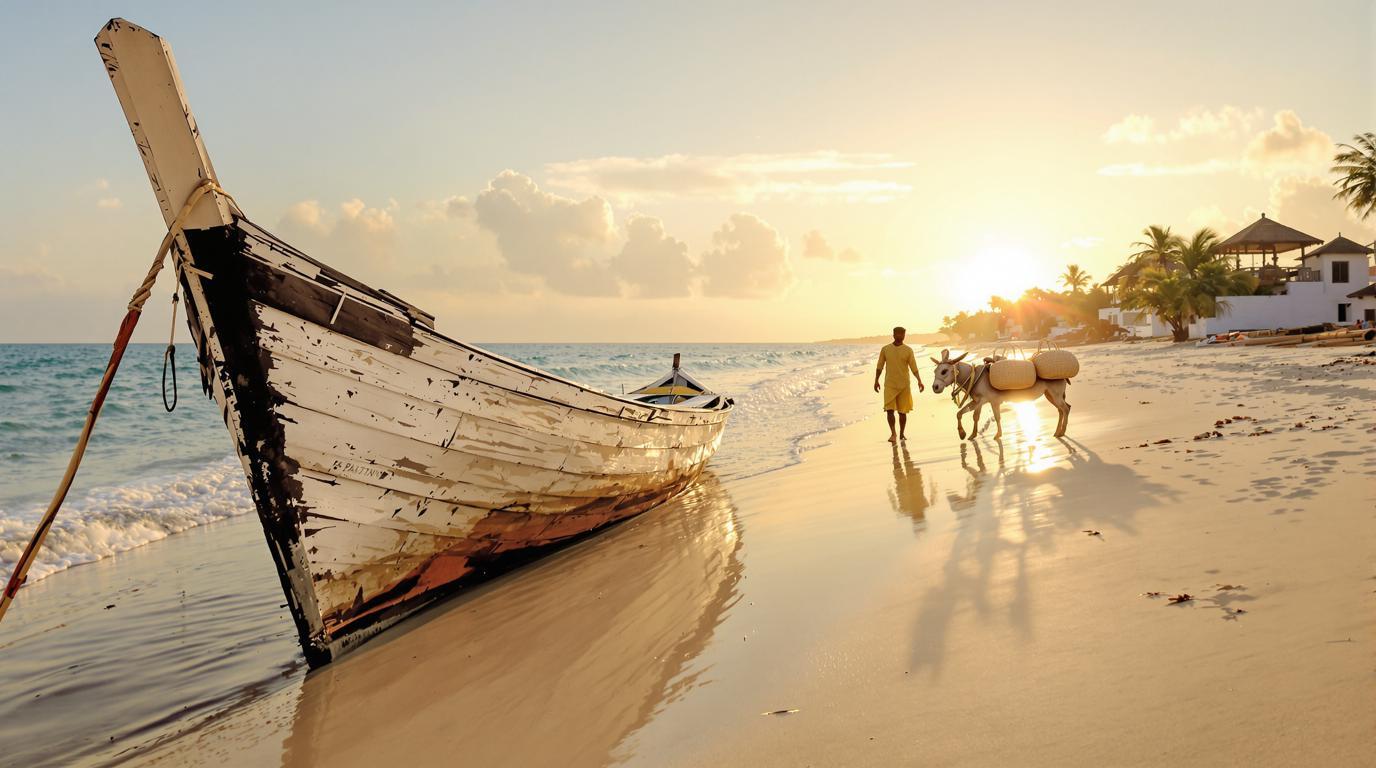Shela Beach: Kenya’s Hidden Paradise Where Time Stands Still
Time moves differently on Shela Beach. As dawn breaks over the 12-kilometer stretch of pristine white sand on Kenya’s Lamu Island, the only footprints visible are yours and those of early-rising fishermen preparing their dhows. This UNESCO-protected corner of East Africa offers a rare glimpse into a world where cars don’t exist, centuries-old Swahili culture thrives, and the rhythm of life is dictated by the tides rather than technology.
A beach that whispers stories of ancient trade routes
Shela isn’t just another pretty coastline. This powdery stretch sits on an island that once served as a critical hub on ancient Swahili trade routes. While neighboring Lamu Town showcases Portuguese-influenced architecture and bustling spice markets, Shela offers a quieter, more bohemian atmosphere where traditional dhows glide across turquoise waters.
“Our beach has remained unchanged for generations,” explains Hassan, a local dhow captain. “Here, you feel the true spirit of coastal Kenya without the crowds found elsewhere.”
Where donkeys replace taxis and boats replace buses
Forget ride-sharing apps or rental cars. On Lamu Island, transportation options are delightfully antiquated: wooden dhows, boda-boda motorcycles (during low tide only), or your own two feet. The 45-minute shoreline walk from Lamu Town to Shela becomes an adventure in itself, especially when timed with the ebbing tide.
The absence of motorized vehicles creates an atmosphere similar to island paradises with overwater bungalows, but with a distinctly African cultural backdrop that feels both exotic and welcoming.
A day in the life: sunrise to starlight
Early mornings offer the most magical Shela experience. Local fishermen haul in their catch as the golden light illuminates the dunes. By midday, the sun beats down fiercely, sending visitors in search of shade at beachfront cafés or for a refreshing dip in the Indian Ocean.
As sunset approaches, the iconic Peponi Hotel becomes the center of social life. Here, expats and travelers gather for sundowners while watching dhows silhouetted against the crimson sky – a scene reminiscent of Iceland’s breathtaking natural perspectives, but with tropical warmth replacing Nordic chill.
Cultural immersion beyond the beach
Venture just beyond Shela’s shoreline to discover artisan workshops where woodcarvers create intricate Swahili doors and furniture. The village itself is a maze of narrow alleys flanked by whitewashed buildings with ornate wooden balconies.
“Each carved door tells a family’s story,” says Amina, a local artist. “The patterns represent protection, prosperity, and our connection to the sea.”
Practical matters: when to go and what to know
The November-April dry season offers ideal conditions for exploring Shela. Pack modest clothing to respect local Muslim customs, plenty of high-SPF sunscreen, and insect repellent for sand flies that can trouble beach loungers.
While Shela has experienced a renaissance similar to other historic sites reborn after challenges, it maintains an authenticity that’s increasingly rare in our hyper-connected world.
The perfect backdrop for disconnection
With limited Wi-Fi and minimal distractions, Shela Beach offers what many private island paradises promise – genuine disconnection. Here, entertainment comes from watching dhow races, exploring hidden coves, or simply tracking the patterns of hermit crabs across the sand.
As night falls, the absence of light pollution reveals a canopy of stars that seems close enough to touch. The only soundtrack: gentle waves and distant drumming from village celebrations.
Shela Beach isn’t just a destination; it’s a portal to a simpler time when natural beauty and cultural authenticity were enough. In our increasingly homogenized world, this sliver of Kenyan coastline remains gloriously, stubbornly itself – making it the perfect antidote to modern travel fatigue.
